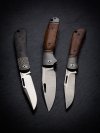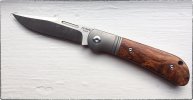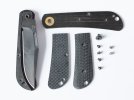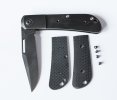Jakeywax31
Gold Member
- Joined
- Mar 27, 2022
- Messages
- 5,054
I personally do not have a problem with either one but pins look way better when done right. Nothing like a nice well built slipjoint with nicely fitted and finished pins.
The BladeForums.com 2024 Traditional Knife is available! Price is $250 ea (shipped within CONUS).
Order here: https://www.bladeforums.com/help/2024-traditional/








You can buy a lot of screw together stuff for what Tony charges for a knife.Tony Bose never used screws and he is the GOAT. Traditional construction on traditional knives is peened. Peening a traditional takes skill, an art. Twisting a screw takes zero talent. Zero of my traditionals have screws, they look hideous.
Unfortunately Tony doesn't charge for knives anymore. RIP.You can buy a lot of screw together stuff for what Tony charges for a knife.
Wow!! Never heard of that method!! Or even how you do it!!??I do minimal peening on my pivot pins these days. There is a better, more reliable way that most of the "big dogs" use. It includes a clamp and a machinist vise.I can't say for sure but if the Old Dog wasn't doing it this way I'd be shocked.
